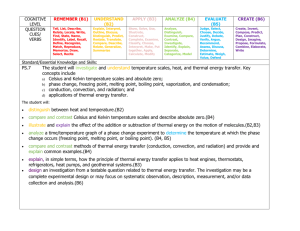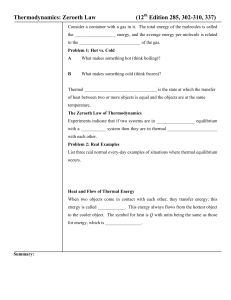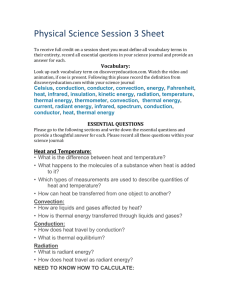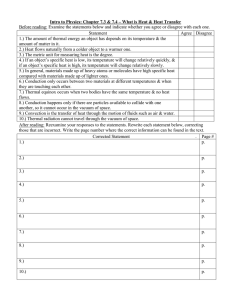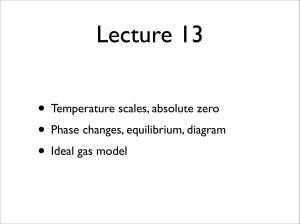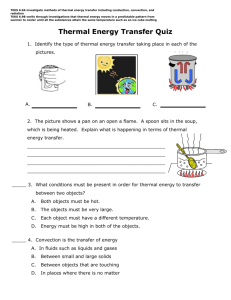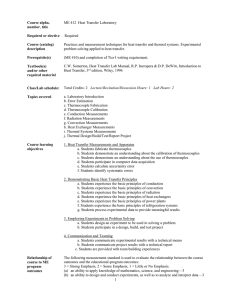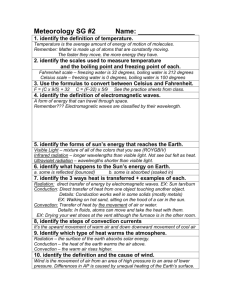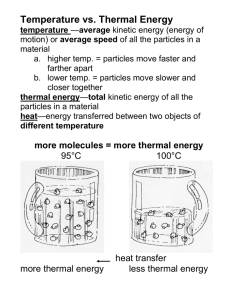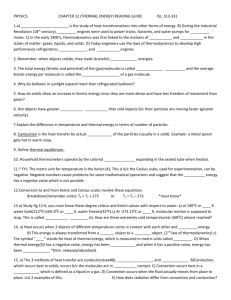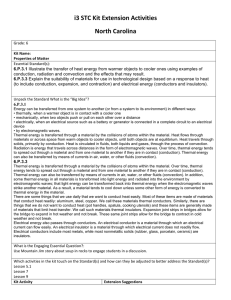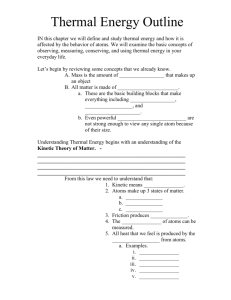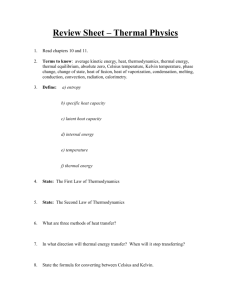Heat-thermal Overview - pams
advertisement
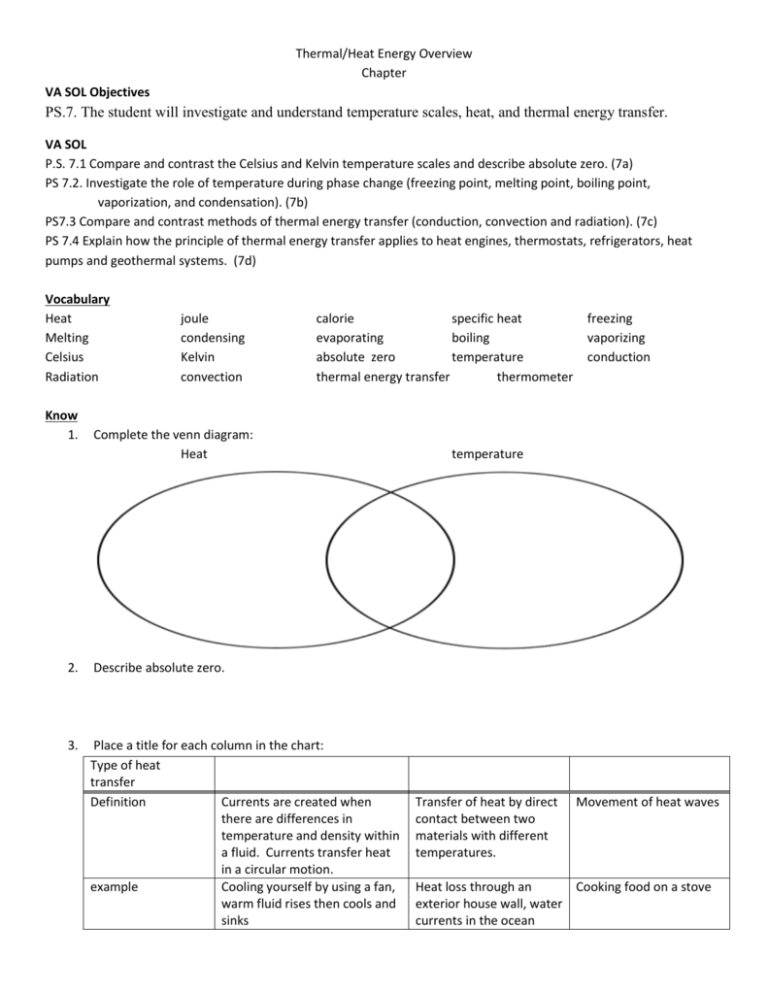
Thermal/Heat Energy Overview Chapter VA SOL Objectives PS.7. The student will investigate and understand temperature scales, heat, and thermal energy transfer. VA SOL P.S. 7.1 Compare and contrast the Celsius and Kelvin temperature scales and describe absolute zero. (7a) PS 7.2. Investigate the role of temperature during phase change (freezing point, melting point, boiling point, vaporization, and condensation). (7b) PS7.3 Compare and contrast methods of thermal energy transfer (conduction, convection and radiation). (7c) PS 7.4 Explain how the principle of thermal energy transfer applies to heat engines, thermostats, refrigerators, heat pumps and geothermal systems. (7d) Vocabulary Heat Melting Celsius Radiation Know 1. joule condensing Kelvin convection calorie specific heat evaporating boiling absolute zero temperature thermal energy transfer thermometer Complete the venn diagram: Heat 2. Describe absolute zero. 3. Place a title for each column in the chart: Type of heat transfer Definition Currents are created when there are differences in temperature and density within a fluid. Currents transfer heat in a circular motion. example Cooling yourself by using a fan, warm fluid rises then cools and sinks freezing vaporizing conduction temperature Transfer of heat by direct contact between two materials with different temperatures. Movement of heat waves Heat loss through an Cooking food on a stove exterior house wall, water currents in the ocean 4. Give examples of how heat energy is transferred. 5. Write the phase names solid, liquid and gas into the chart below. 6. Using the diagram below answer the following questions: a) b) c) d) 7. D Identify the letter that where a solid, a liquid and a gas would be represented. Identify the letters that represent a phase change. Name the phase changes for the diagram describing the phases for cooling or heating of a substance. Identify where 0oC and 100oC are on the diagram.

